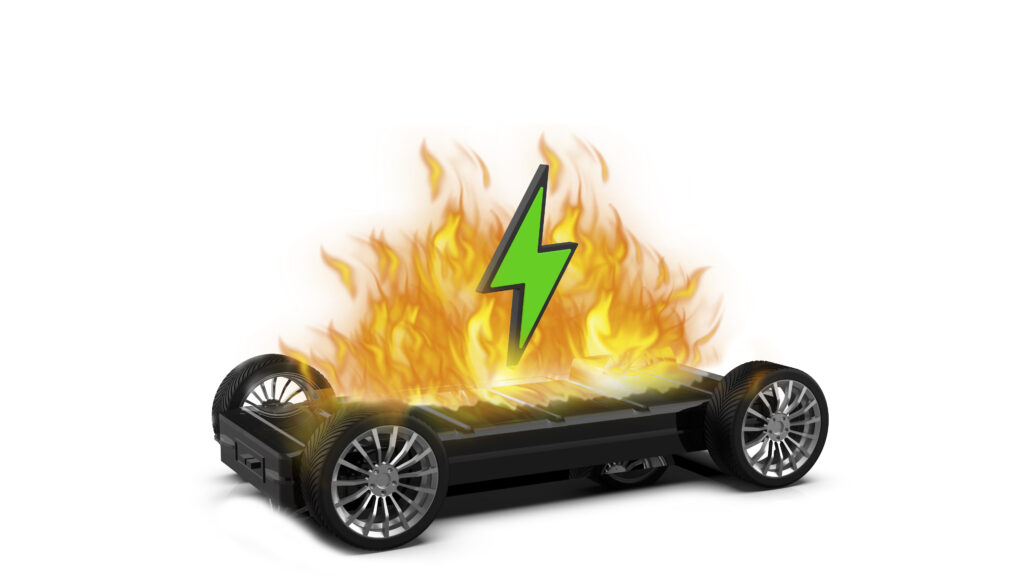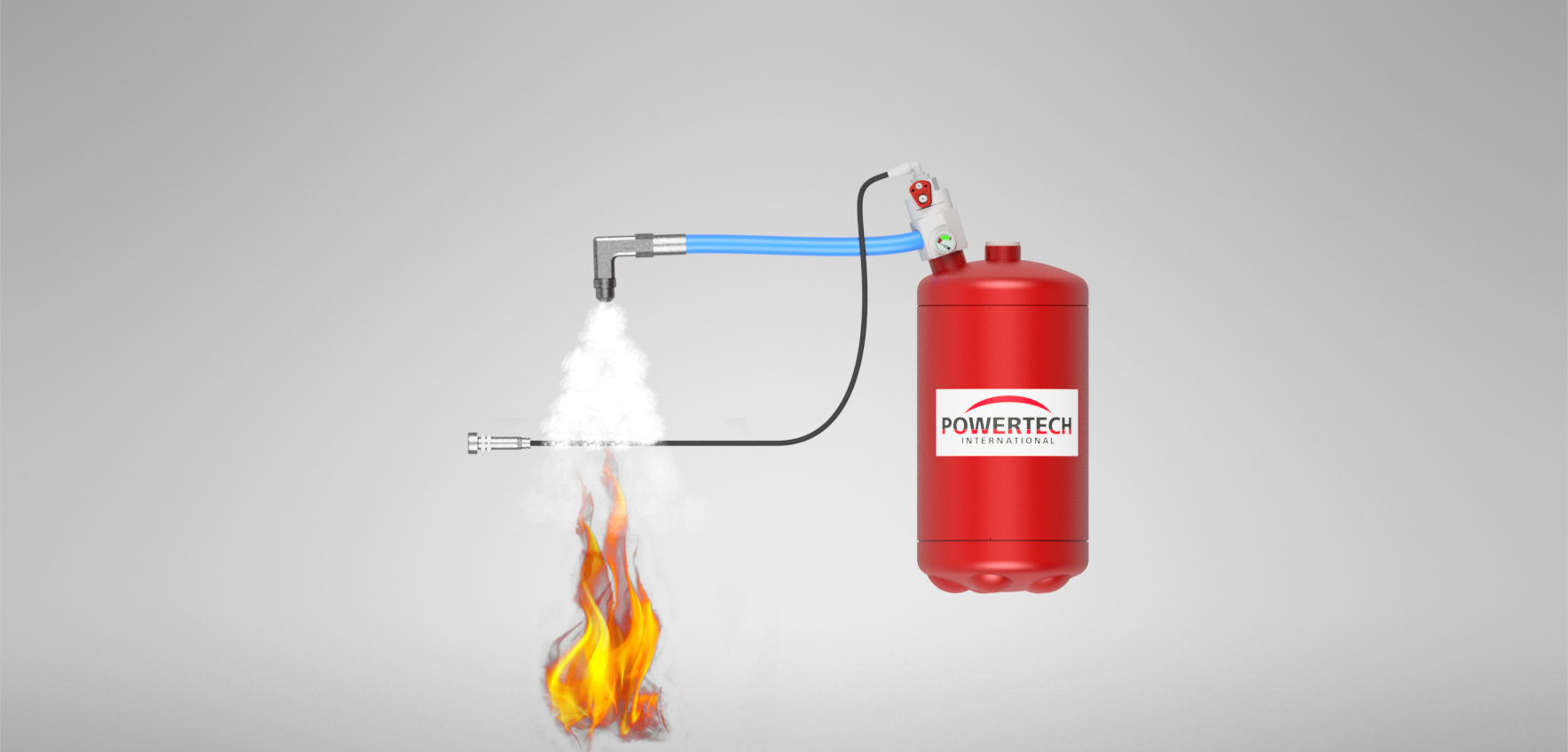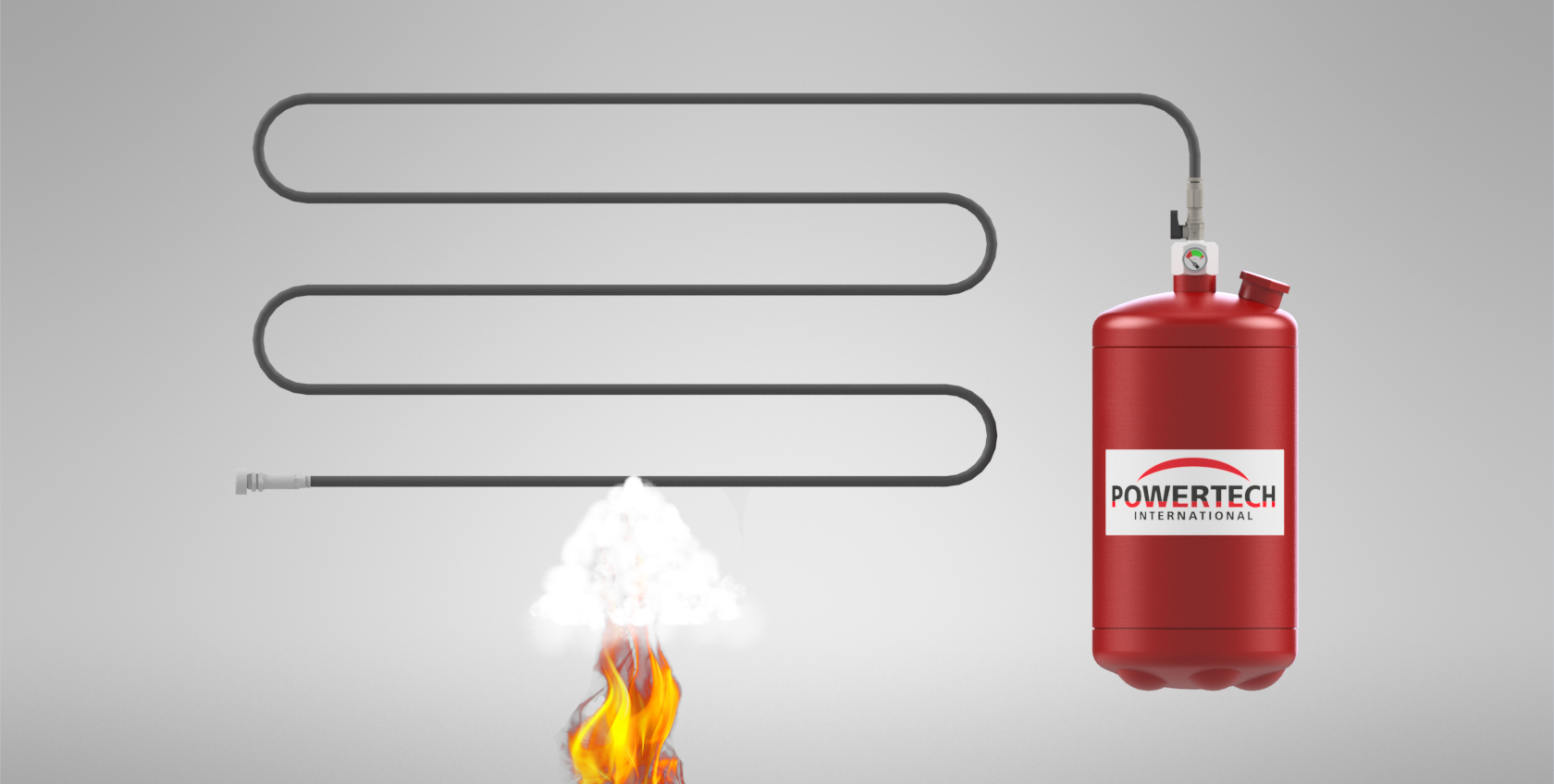Electric and hybrid vehicles
Battery fire: What to do ?
POWERTECH International GmbH asks you the suitable system!
The higher the energy density of batteries and rechargeable batteries, the greater the fire hazard. Fires from lithium-containing cells proceed differently than "normal" ones such as from gasoline spills. In the meantime, extinguishing techniques and means of prevention have advanced with our POWERTECH International fire suppression system .
Lithium-ion batteries are dangerous: time and again, cells suddenly catch fire. This is a new phenomenon in the field of energy storage, because unlike the "classic" battery types with water-based electrolytes, they use organic solvents - i.e. hydrocarbons - which are almost as flammable as petrol. Electric buses, electric cars as well as e-construction machines have already burst into flames. But not only batteries are affected, the non-rechargeable primary cells can also catch fire.
In order to prevent such cases, intensive research is now being carried out at POWERTECH International! Not only fires that break out by themselves are the subject of meticulous investigations. Instead, intentionally generated fires are also investigated under controlled conditions in a secured environment in order to study the individual processes and the success of various extinguishing methods. The tests conducted in the experimental laboratories are deliberately made difficult.
The energy stored in lithium systems of all kinds can be of very different orders of magnitude: from just a few watt-hours in smartphones to a few kilowatt-hours in electric cars to many megawatt-hours in storage systems to support the power grid. It should be borne in mind that even a very small cell that catches fire can start a large fire.

Multiple causes of fire
The most common trigger for a fire is overheating of one or more cells. For example, in an accident between an electric car and a vehicle with an internal combustion engine, leaked fuel can catch fire and heat up the battery. Under certain circumstances, however, even strong solar radiation is sufficient if the cooling system fails at the same time. If the cell becomes too hot, the separator can melt - from about 150 °C - and an internal short circuit can occur. The resulting hotter and hotter cell heats up the neighbouring cells, which can lead to thermal runaway of the entire battery system. Temperatures of more than 600 °C can occur.
More likely, however, is overheating directly inside the battery, for example due to the failure of the battery management system (BMS). Normally, the BMS protects the battery from harmful operating conditions. However, a defect in the electronics can cause overcharging - with dangerous consequences. Equally destructive is an excessive current draw and even more so - if the usually built-in fuse fails - a "hard" short circuit in which several thousand amps can flow.
But the other extreme also involves high risks. When charging a lithium-ion cell damaged by deep discharge , the amount of energy supplied can no longer be stored in the form of chemical energy due to the lack of electrolyte fluid, and the charging energy becomes heat. In addition, dissolved copper ions from the current collector deposit on the graphite of the anode in the form of needles, also called dendrites. They can pierce the separator foil and cause a short circuit.
Another cause of fire is mechanical damage to a cell - for example due to an accident involving an electric car, or after the end of use on the way to recycling due to rough handling. Strict safety regulations must therefore be observed during collection. These are useless if consumers throw their mostly still functional and merely obsolete mobile phones into household waste. It has also been proven that they have ended up in the waste paper bin and caused a smouldering fire in the paper press.
Especially at high currents, there is a risk that the lithium ions will deposit as metallic lithium in the form of dendrites on the anode instead of being reincorporated into the graphite, again with the risk of short circuits.
Another danger is posed by counterfeit batteries and chargers, which often do not comply with the relevant safety regulations.
What exactly happens during a fire?
The individual types behave quite differently in terms of safety. The lithium cobalt dioxide accumulator, also known as the Li-CoO2 accumulator, which was also responsible for the Samsung incidents and is now in sharp decline, is particularly dangerous. A good alternative is the NMC cell with a mixed cathode of nickel, manganese and cobalt oxide, which achieves a higher energy density. The safest is the LFP cell (lithium iron phosphate), but these have a much lower energy density. In the cells, the most flammable component is the electrolyte. The solvent is a mixture of various organic carbonates, all with low flash and boiling points. Graphite is carbon; in pouch cells, the plastic coating is also flammable.
If the cells actually catch fire, they can be suffocated by preventing oxygen from entering. It is different with the exothermic reaction of the electrode materials with each other - this cannot be extinguished. At high temperatures, the cathodic metal oxides decompose under oxygen release, whereby - without external air supply - the electrolyte, the graphite including the stored lithium and also the aluminium from the cathode supply line can burn for a long time. To stop this, only strong cooling can help. There is also a risk of explosion due to graphite dust penetrating to the outside.
When the cell is heated , first the electrolyte evaporates. High pressure builds up, the cell inflates strongly until the hot gases - mainly hydrocarbons, carbon monoxide, hydrogen fluoride, hydrogen - escape through the overpressure valves provided or through uncontrolled bursting of the outer shell. In addition to the risk of poisoning, there is also a risk of explosion, with solid materials, parts of cell casings or metal oxides, which are also toxic, flying around.
The lower the charge level of a cell, the lower the consequences in case of fire. But beware: Even a seemingly discharged cell still contains a lot of energy. In the event of failure, it can release about 6 to 10 times the removable electrical energy in the form of thermal energy. The reaction of a thermal runaway cannot be interrupted from the outside and ends within a short time with a cell fire, which can lead to complete destruction within seconds.
Extinguishing a lithium-ion battery with our POWERTECH International GmbH fire suppression system.
Together with the manufacturer Dr. Sthamer (Hamburg) and the Fraunhofer Institute, we have now developed the appropriate special extinguishing agent with our and the corresponding coordinated system for you!
Enquiries at : info@powertech-international.com
Our solutions:
Indirect fire suppression system
The POWERTECH tube works as a detection device.When a fire rises the temperature, the tube detects it and, immediately activates the cylinder releasing the extinguishing agent in the protected area though the pipes and nozzles.


Direct fire suppression system
The POWERTECH tube has a double function: Firstly it detects the high temperature due to a fire,which causes its break,and subsecuently it discharges the agent through it.
